One of the fundamental rules of any zoo is to partake in conservation breeding to establish an insurance policy group of animals against extinction. My zoo is no different, successfully breeding endangered white rhinos as an example which if you ever have the opportunity to meet a rhino then do it- it will change your life.
Sadly, what comes with breeding animals also can come with problems where the mothers of the young can either die, become ill and struggle to feed their young, abandon their young or even worse kill their young. As zookeepers, the last thing we want to do is take an animal in for hand raising, we do everything in our power to ensure that mother and baby bond and she raises it herself. Even to this day it is assumed that zoos hand-raise all their animals and this couldn’t be further from the truth. Yet there are occasions where we must make the tough decisions that are based on many factors when we need to pull the young such as:
- Will taking the baby from its mother cause any distress- has she already bonded? Have they been together for a while?
- What are the consequences of raising the young? Will it affect them long-term? Will they be able to breed once it has reached maturity?
- How long will it need 1-1 care from keepers?
- Do you have enough experienced staff to raise the young?
- If it is a large carnivore will you remove its fear of humans?
- If it is a social animal, will it integrate back into the group without problems?

The list goes on! It is a real nice idea to take an animal home, care for it, feed it, develop that kind of bond with them but this can be detrimental to the health and well-being of that animal. Each time this situation arises which isn’t very often fortunately the decision is made very carefully of what would be best for that animal and not for the keepers.
For my section we only have one species as part of a breeding program that we are awaiting the arrival of a male from another zoo so hopefully in the future there may be a post about some endangered babies. In the mean time we have been very successful, where other zoos have not, in breeding our Rainbow Lorikeets through the vast experience some of our chicks have taught us.
It began when two of our Rainbow Lorikeet birds decided to lay an egg within a wall they had chewed through and the chick hatched in 2015, that we had to make a decision on what to do once she got too big. We had never hand-raised a lorikeet before and had no idea what to do, we called around a few places to get some advice and decided to take the aviary apart after 3 weeks and get the chick and the parents out and put them in a spare aviary, hoping the parents will . Sadly, the parents abandoned the chick and it left us having to raise the bird on our own.
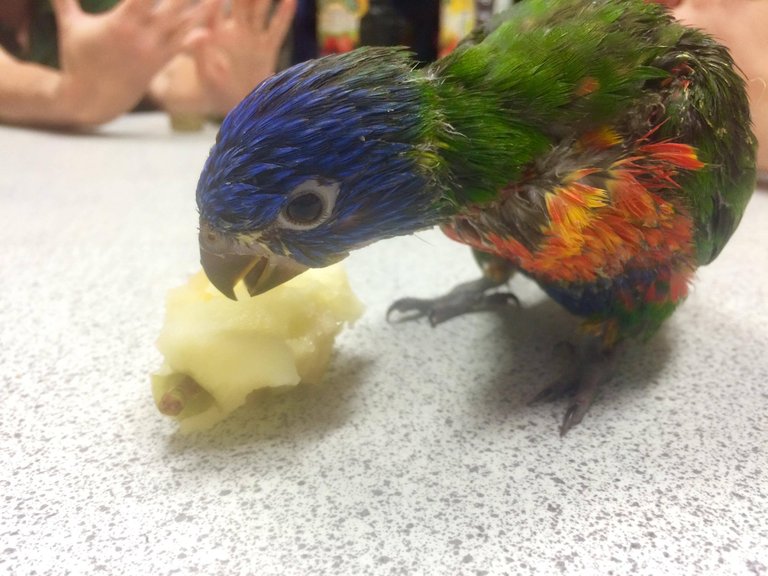
My word did this bird scream at us, we placed her in a large container with a heat matt and towel and every 2 hours offered her food on the bent spoon. Lorikeets are not seed eaters and eat a specialist diet of nectar, fortunately we get this in for our main group of birds and all we had to do was mix it with water, heat it up and mix in an apple fruit puree. Sounds simple? Try getting a baby bird that has not seen a human before to eat from a huge spoon, it was a complete nightmare! After a few days, the little bird got the hang of it to our relief and started putting on weight. During this time, we kept comprehensive records of her growth so that if we ever had to do it again we could see exactly what she was fed, how many times a day, how much weight she lost and gained, when she fledged, when she started to feed herself, when we DNA tested her and put a ring on her leg and when we put her with the main group.
I won’t ever forget the day I took her home. I had been feeding her daily at the zoo so I was quite happy in her aftercare. The family couldn’t wait to meet her and see what a baby lorikeet looked like, I took her out of her carrier for feeding and everyone took photos and wanted to play with the little baby bird. I let her sit and watch for a while once she had fed before letting her go back in the carrier to sleep. She slept right through the night and did not require overnight feeds (fortunately for me!). Lots of keepers took it in turns to take her home until she reached approximately 42 days when she began to feed herself properly meaning we were no longer required to help.
When she was 50 days old she decided it was time to finally start flying so we pulled some chest feathers from her and sent them for a DNA check to see if she would be a girl or a boy and going by what I have written can you guess? Yep she’s a girl! Her ID number is 11 and ever since she joined the main group she has been nothing but trouble.
Number 10
She had partnered with a second hand raised bird number 10 who is a handsome fella, yet they decide that sitting right by the main doors is the best idea because the food comes through there so they bombard people as soon as the flaps open! They also defend their nest site (ironically on the floor dug into the pond wall) so anyone who sticks their fingers in there gets a sharp bite and if 11 sees her favourite keepers they are not leaving the building. That bird clings on to every part of you and absolutely LOVES keys! Give her a bunch of keys and it’s her best day.
Nothing gives a keeper more pride in seeing the animal you helped raise grow up, pair up with another animal and breed themselves. Number 11 & 10 have not yet had their own chick as they are only now just reaching sexual maturity and hopefully they will be able to raise their chick on their own.
Hand raising has its challenges and I will share more about certain animals I have hand raised over the past few years. 11 taught me a lot about patience and care and thanks to the knowledge we have gained from her we have 100% hand rear success rate from all our chicks and have raised a total of 8 birds before we allowed the parents to do it themselves. Most difficult were these two when we sadly lost the hen and they were very well developed, it took a towel and not touching them and the use of a syringe to feed them yet they are now living perfectly well and healthy in the main group!
Not all animals can be successfully hand raised and there are times we have lost young from our attempts to save their lives. it is the hardest part of our jobs but without our help some of these species would no longer exist.
I hope you enjoyed today's post. Any questions please feel free to ask!
Please resteem, upvote and follow me for more
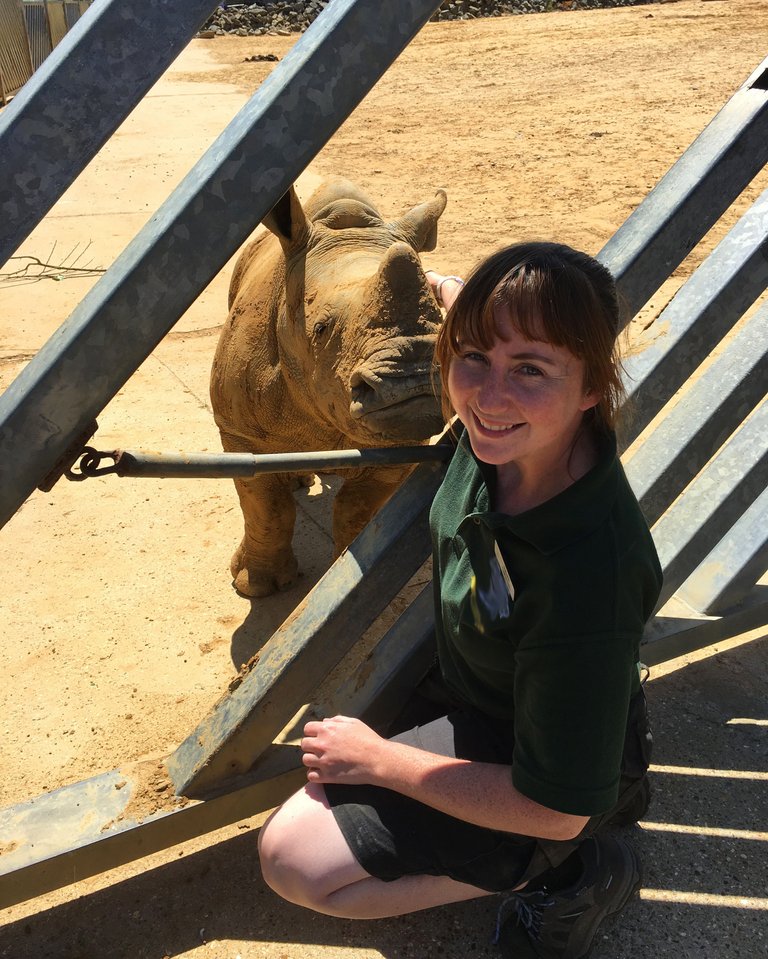
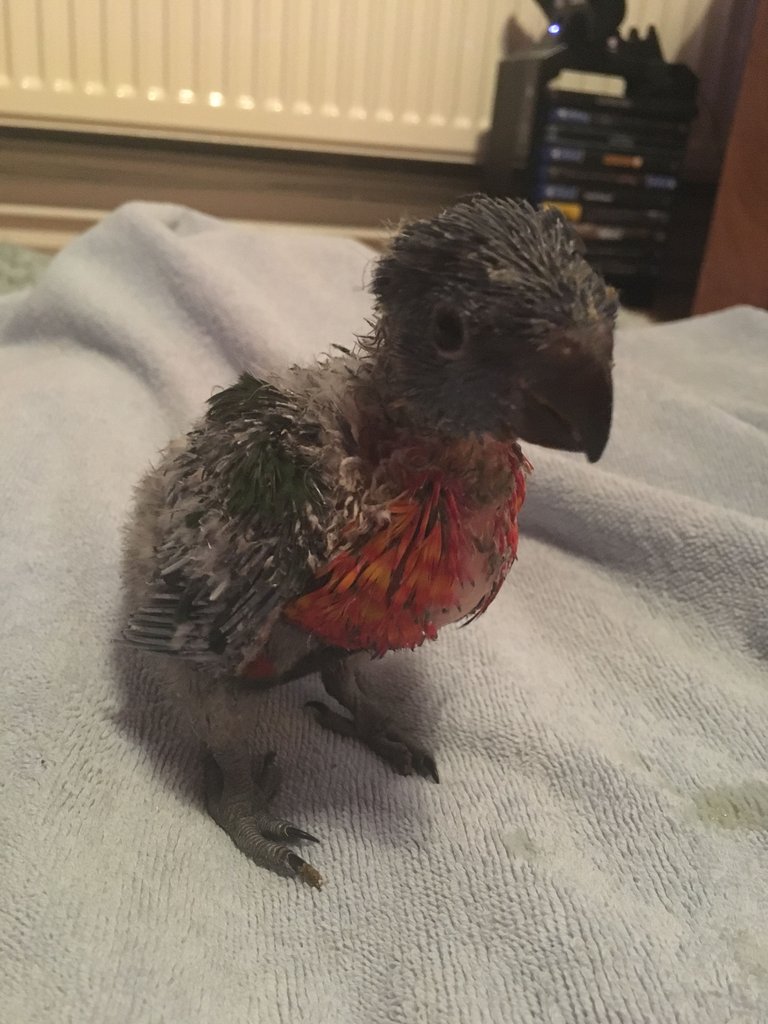
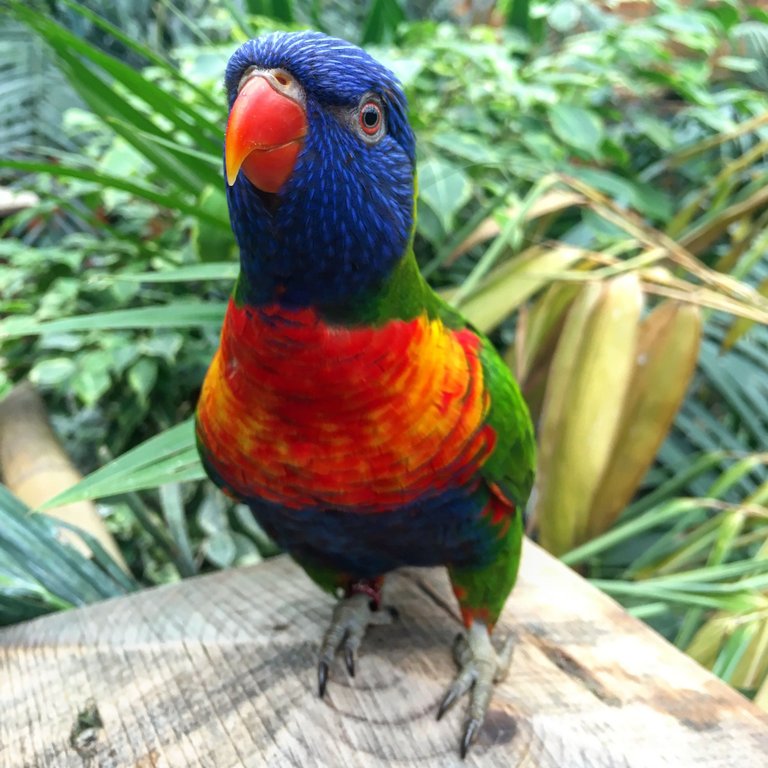
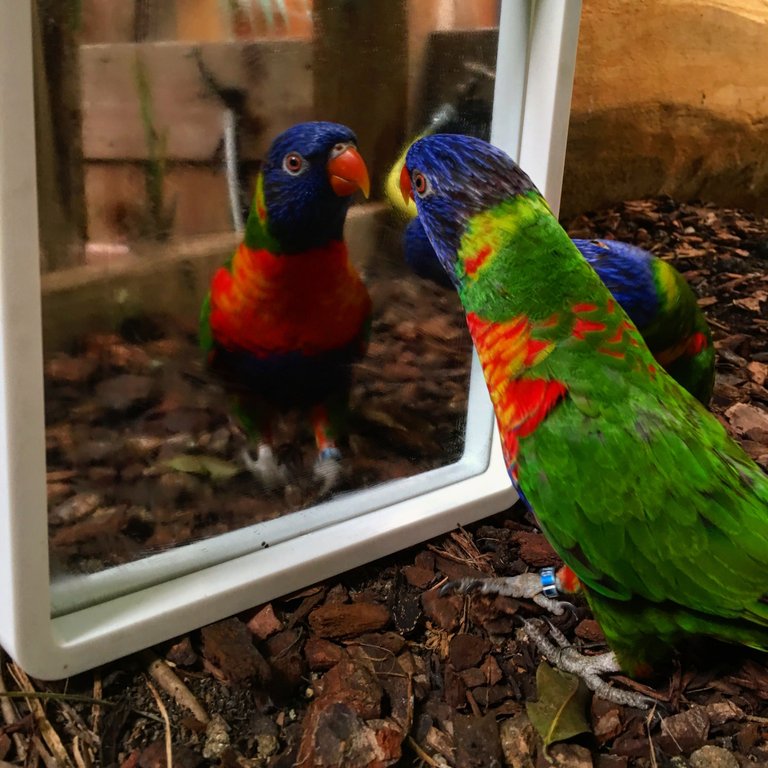
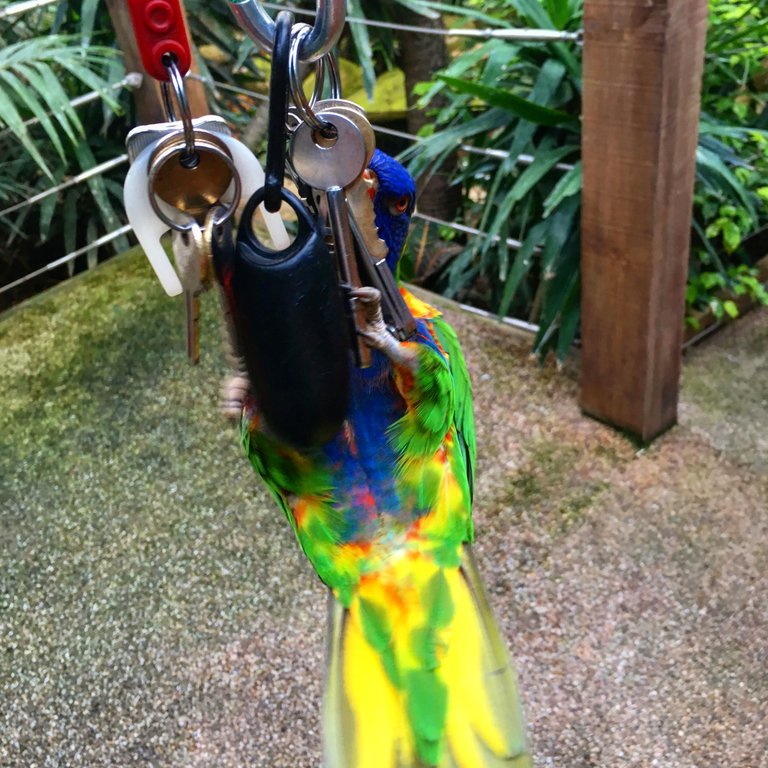
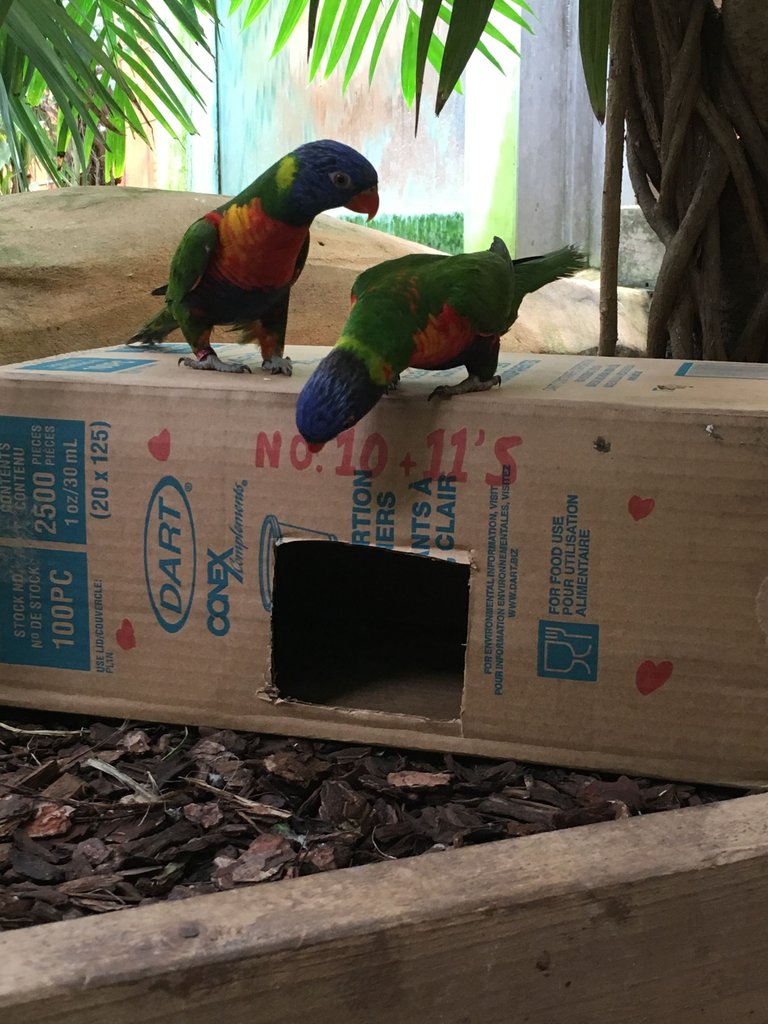
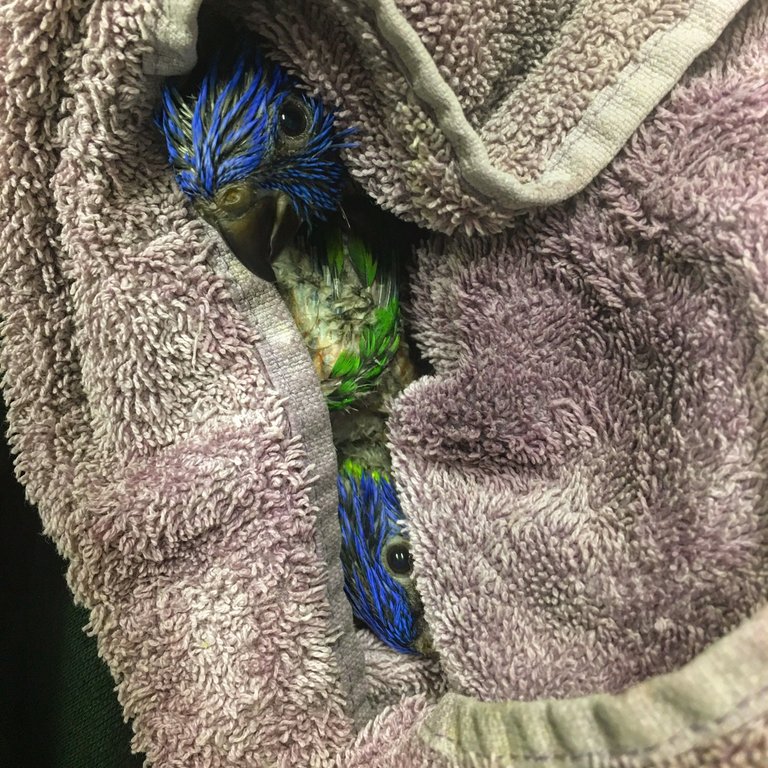
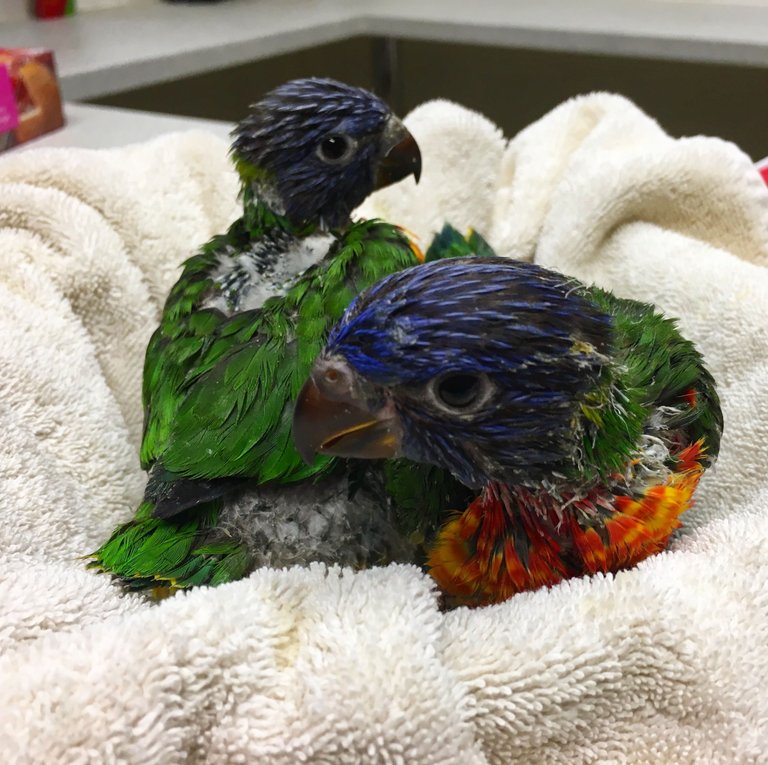
I love your blog. When I was a child, I dreamed about being a zookeeper when I grow up, but then I became a Ob/Gyn. Life! I like reading your stories and thinking this could have happened to me. In Caracas, where I live, there are a lot of macaws all over the city and people feed them from their windows and balconies. I believe they cause them a great damage with this behavior
feeding wild animals can be both damaging and good. Sadly the animals living wild have their habitats destroyed, reduced amount of food available for them that they are having to move further inland. I personally have no issues with feeding wild animals provided it is done to not change their behaviour but to just help them out. I randomise the feeding days and also only feed certain times of the year when food is harder for them to find. Animals need our help and we have to do something, but yes if its affecting their behaviour then I agree this is pretty detrimental to the species. I am glad you enjoy my posts, I aim to post daily :)
When Steem eventually takes off and were all millionaires and no longer have to worry about money I would love working or volunteering at a zoo. Thanks for the beautiful pictures and sharing your experiences.
Just have your own zoo haha! I believe it will take off for us all and we are already on that gravy train! I am glad you have enjoyed my blog :)
What a great post. I have never done anything quite so cool as raise an exotic bird, but ever time I deliver pups or kits through C-section, I wait helplessly, working on mom while my team revives the babies. I constantly harass them on the status of each, and my favorite music to close by is the soft mews or cries of the newborn. Thanks for sharing!
Oh thank you :) nothing is more special than being at the birth of an animal! Sadly with the birds we rarely see it as we don’t hatch our loris ourselves, we let Mum and dad do it! The most we see is the egg pipping and then the next day a baby appears! A little fluffy jellybean :D
@originalworks
The @OriginalWorks bot has determined this post by @amavi to be original material and upvoted(1.5%) it!
To call @OriginalWorks, simply reply to any post with @originalworks or !originalworks in your message!
I have a niggling memory that hand-raised birds are notorious for not wanting to mate, because of human imprinting - do you think this is a problem (in general)?
The Lorikeets are beautiful, and I imagine they scream pretty darned well, lol. I've had other birds, but not Lori's.
The baby Rhino... well, you just want to cuddle it (perhaps just figuratively speaking)! :)
That is very true for a lot of parrot species, however if done correctly it can be avoided. Jersey Zoo for example hand raise a lot of their most endangered species of birds that go on to breeding and rearing successfully! One of our older loris was a hand reared pet and she this year finally hatched and reared her first ever chick! 11 and 10 have been mating but because they haven’t won a nest box she has not yet laid and they are only just reaching the right age now! Imprinting is definitely a problem sometimes it can be avoided and other times it can’t. It can really depend on the individual, we have a couple of goats hand reared but are not that interested in us anymore! I guess the management practise has a lot to do with it- I am still learning this myself!
Rhinos are the best! They absolutely love scratches and this little one sometimes rolls on his belly for a tummy scratch haha :)
A baby Rhino tummy scratch? Oh I'd love to see a video of that! <3
Next time I’m down there, I shall video it for you!
I love your posts! So full of information, emotion, and love! :)
That’s really lovely of you to say thank you :) it makes me want to continue to write more! So I will :)
Yay! :) :) :)
@amavi,
This gem of a post was discovered by the @OCD Curator group!
Please Reply to this comment if you accept, and are willing to let us share your gem of a post! By accepting this, you have a chance to receive extra rewards and one of your photos in this article may be used on our compilation post!
You can follow @ocd – learn more about the project and see other Gems! We strive for transparency!
Love all of the photos! It's amazing you get to work with them!
Please reply and I will nominate your post to the @OCD Curators!
Yes of course, thankyou :)
I'm pretty sure I see these things in my trees sometimes (they look the same, but I'm not brilliant at identifying birds by any stretch). They're so pretty!
Where abouts in the world are you I may be able to confirm :)
Western Australia. I did actually end up looking it up and they were introduced here, so I'm not completely insane XD
More than likely to be lorikeets! I believe in some places in Australia they are a pest and in other places they love them!
Looks like they're a pest over here and competing with a native species for nesting sites. But I suspect people still love them because they're so pretty XD
Congratulations @amavi! You have completed some achievement on Steemit and have been rewarded with new badge(s) :
Click on any badge to view your own Board of Honor on SteemitBoard.
For more information about SteemitBoard, click here
If you no longer want to receive notifications, reply to this comment with the word
STOPBeautiful
Thankyou the animals really are :)
Wow great ARTICLE!!
That parrot is so beautiful!!
Oh thankyou! She really is a stunning bird! I’m lucky to be one of her favourites, she’s taken a liking to nose picking recently! Crazy bird!
That was a great post. It's touching how much you truly care for the animals in your zoo. It really comes through in your writing. I love all the pictures too! It sounds like you have bird rearing down to an art. :)
That’s exavtly what I was hoping for, thankyou for commenting :) I hope that you may enjoy my future posts also. Yeah thanks to number 11 and number 13 who we raised from Day 2 (nightmare!) they have really taught us everything we know and we are now sharing our research with other zoos to assist in their rearing also. Surprisingly some other zoos are struggling with this species so by sharing the research we have it’ll help them!
That's so great you can share the knowledge with other zoos! I know people are on the fence about zoos and captivity and whatnot. But I am definitely in favor. Programs like yours not only allow a species to thrive in your zoo, but you're also able to educate others so they can take the best possible care of their animals as well.
So wonderful! I'm a huge fan of conservationists and true animal lovers such as yourself. I'm following you now and look forward to more posts!
(I'm also part of a curation team, but OCD got to you first on this one. Ha! Next time.)
Oh that’s lovely to read thank you :) I plan to post daily (hopefully) so maybe you’ll get the next one haha :). Zoos are a huge pile of resource for other zoos and animal collectors/carers it’s amazing what you can find out should you need to! They have really changed these past 50 years :)!